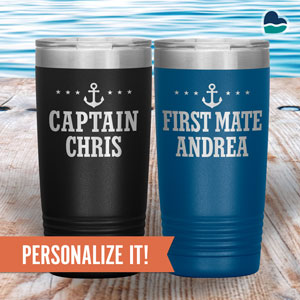African Great Lakes
Also known as: Rift Valley Lakes
The African Great Lakes are a little-known and often misunderstood natural feature. These lakes are not connected, for the most part, and don’t even share the same drainage basin. What they do share is a unique place in the history of the world’s bio-diversity; some consider their location in East Africa’s great Rift Valley to be the cradle of development for much of the earth’s life forms,…
Keep scrolling to read more.
Welcome to the ultimate guide to African Great Lakes! Article topics include:
- All About African Great Lakes
- Where to Stay
- Vacation Planning Tools
- Things to Do
- Known Fish Species
- African Great Lakes Map
- Statistics / Weather / Helpful Links
- African Great Lakes Gifts
Looking for African Great Lakes cabins or other accommodations? Save time and use this interactive map to find, compare and book at the best rates. Or explore more of our favorite travel partners.
This post contains affiliate links. If you click and purchase, we may earn a small referral fee at no extra cost to you. Read our full disclosure.
Explore Area Hotels
Nearby offer more hotel accommodations:
All About African Great Lakes
The African Great Lakes are a little-known and often misunderstood natural feature. These lakes are not connected, for the most part, and don’t even share the same drainage basin. What they do share is a unique place in the history of the world’s bio-diversity; some consider their location in East Africa’s great Rift Valley to be the cradle of development for much of the earth’s life forms, including humans. A major geophysical fault, the entire rift system extends over 3,700 miles from northern Syria to central Mozambique in East Africa. The East African portion of the geological fault branches into two ‘arms’, called the Western Rift Valley and the Eastern Rift Valley. The valleys created by the rift comprise the drainage systems of the Nile, the Congo and the Zambezi Rivers. Seven of the large lakes feeding these river systems are commonly called the African Great Lakes.
The Rift Valley is famous for the number of researchers who made important finds here to enhance our understanding of nature and the earth. It is here that the well-known anthropologists, the Leakey family, found evidence of some of humankind’s earliest ancestors. Here too, both Dian Fossey and Jane Goodall lived with and documented the behaviors of chimpanzees and mountain gorillas. The Rift Valley is home to the Serengeti ecosystem with its wealth of exotic native animals and a popular destination of safari groups. The African Great Lakes provide an excellent starting point for any excursion into many national parks and reserves.
Although there are more than seven lakes in the Rift Valleys, not all are termed Great Lakes due to their smaller size. All of the lakes, however, have provided the water and conditions necessary for the great variety of wildlife and fish that thrive there. The lakes also support millions of people who have lived near their shores for thousands of years. Lake Victoria, Lake Albert, and Lake Edward empty into the White Nile, which feeds into the Nile River. Lake Malawi is drained by the Shire River into the Zambezi, while Lake Tanganyika and Lake Kivu both empty into the Congo River system. Lake Turkana is a terminus lake and has no outlet. All are natural lakes, although some have been dammed to provide power. Lake Rukwa and Lake Mweru are not considered African Great Lakes, although they are larger than Edward and Kivu.
The lakes of the Western (or Albertine) Rift, together with Lake Victoria, are the largest, deepest, and oldest of the Rift Valley lakes. What is usually referred to as the African Great Lakes region includes parts of Burundi, Rwanda, Democratic Republic of Congo, Uganda, Kenya, and Tanzania. Not usually included are Zambia, Malawi, Mozambique and Ethiopia, even though all touch on the lakes’ shores.
Lakes Victoria, Malawi, and Tanganyika, and to a lesser extent Lake Turkana support a thriving tourism industry. All can boast tourist accommodations in the form of ‘camps’ or resorts with varying degrees of luxury. The larger cities also provide modern hotels and a few resort destinations. Preferred transportation into the area is via air as the Valley is several days’ drive over poor roads from the nearest large modern cities. Traditionally, this has been a destination for backpackers and those who have booked ‘safari’ packages.
Eco-tourism has become increasingly popular, and most countries in the Rift Valley are actively promoting such tourism to support preservation programs and to provide cash income to their desperately poor populations. Cultural tourism is becoming more attractive as facilities and tours are developed. Numerous national parks and game reserves have been set aside to protect varied species of rare birds and wildlife; all are popular among tourists. The lakes themselves offer one of the widest selections of fish species in the world. At one time, Lake Victoria alone supported over 500 varieties of popular aquarium inhabitants, the cichlids. Unfortunately, introduction of the Nile perch in the 1950s as a food source caused the loss of over 250 species of this brightly-colored little fish. Because the African Great Lakes provide a vital protein source and livelihood to millions of local people, the trade-off has improved the lives of native inhabitants at the expense of some of nature’s greatest diversity.
Several of the lakes offer sailing, kayaking and other boating opportunities. Many are considered great for sport fishing. White water rafting on the larger rivers has also become very popular. Bird watching along the shoreline and on the islands, some of which are national parks or reserves, provides one of the best opportunities in the world for observing a wide variety of resident and migratory birds. Wide sandy beaches and picturesque vistas provide for tranquil and exotic vacationing. But no matter how inviting, swimming is considered dangerous except in certain designated areas due to the possibility of contracting one of several African diseases. One disease of major concern is Bilharzia, a parasite carried by shallow water snails. No matter how exciting it might be to watch crocodiles, hippos and other native African species enjoy the lake margins, to find oneself unknowingly swimming with them would be decidedly dangerous. For this reason, a knowledgeable tour guide or reputable local guide is recommended for most trips to the African Great Lakes.
Lake Victoria, with 17,000,850 acres, is the continent’s largest lake, the largest tropical lake in the world, and the second largest freshwater lake in the world in terms of surface area. More detailed information regarding attractions and conditions can be found on Lakelubbers’ Lake Victoria page.
Lake Tanganyika is the largest by volume and deepest of the Rift Valley lakes and is thought to be the second-oldest lake on the planet (after Lake Baikal); part of the Congo River basin, it feeds into the Congo via the Lukuga River. With 7,907,372 acres, the bottom 4,000 feet of water hold no fish, being either too high in hydrogen sulfide or too low in oxygen to support life. As there is no mixing of the water at this depth, it is estimated that some of this water may be up to 20 million years old. Oddly, the temperature difference between the surface and the deeper reaches always remains less than 5 degrees Fahrenheit – an unusual phenomenon currently under study.
Lake Malawi, also known as Lake Nyasa, is the most southerly lake in the Great African Rift Valley system. With 7,314,319 acres it is the third largest lake in Africa, and the ninth largest in the world. Both Lakes Tanganyika and Lake Malawi have separate informational pages on Lakelubbers.
Lake Turkana, formerly known as Lake Rudolph, is popularly called the Jade Sea for its great expanse of emerald water. It is the world’s largest permanent desert lake and the world’s largest alkaline lake. By volume it is the world’s fourth largest salt lake. Both South and Central Islands on the lake are now designated national parks. Along with a third national park abutting the shoreline, Lake Turkana is gaining in popularity as a tourist destination, primarily for eco-tours. Lake Turkana is 1,582,710 acres.
Lake Albert, formerly named Lake Mobutu Sese Seko,is the northernmost lake in the Western Rift. The lake covers 1,309,659 acres.
Lake Edward drains north into Lake Albert and spans 574,520 acres.
Lake Kivu empties into Lake Tanganyika via the Ruzizi River. Kivu has large reservoirs of methane and carbon dioxide lying deep beneath its surface and along its shores. These gases are beneficial when tapped for fuel, but deadly when encountered by unsuspecting villagers or livestock. This lake is 548,574 acres. More information can be found on the Lakelubbers Lake Kivu page.
Together, these African Great Lakes provide 36,238,004 acres of water and contain a volume of 2,507,138,660,000 acre-feet. There are thousands of miles of shoreline, but definite numbers haven’t been determined due to the lakes’ sometimes inhospitable terrain and their span across several countries. It is estimated that these lakes contain about 25% of all surface fresh water on earth. Sights and experiences here will excite even the most widely-traveled visitor. Lodging is available in camps and resort hotels, while the more adventurous may choose to rent a more traditional hut for a night or a week. Local fruits and vegetables are commonly found for sale in local shops and stalls, along with freshly-caught fish and native dishes. Local craftsmen sell their traditional wares at very affordable prices, and one can always find a local guide for a hike into nearby mountains or to visit a colony of rare and protected wildlife. Most villagers are glad to see tourists and welcome their dollars to augment their meager incomes. However, advice from the hosts of one’s ‘camp’ or resort should always be sought and heeded for safety’s sake as they are familiar with the local area and conditions.
Hope you can visit these African Great Lakes soon! It is a destination like no other on earth and one you will never forget.
Things to Do at African Great Lakes
These are some activities in the African Great Lakes area visitors can enjoy:
- Vacation Rentals
- Fishing
- Boating
- Sailing
- Swimming
- Beach
- Kayaking
- Whitewater Rafting
- Camping
- Hiking
- Wildlife Viewing
- Birding
- National Park
What Kind of Fish Are in African Great Lakes?
African Great Lakes has been known to have the following fish species:
- Perch

Find Places to Stay at African Great Lakes
If you’re considering a African Great Lakes lake house rental or hotel, we’ve made it super easy to find the best rates and compare vacation accommodations at a glance. Save time using this interactive map below.
Note: These are affiliate links and we may earn a small commission if you click and make a purchase. Read our full disclosure policy here.
More Sites to Book a African Great Lakes Vacation
Our interactive African Great Lakes lodging map above is an easy tool for comparing VRBO rental homes and nearby hotels with Booking.com, but there could be times when you need to expand your search for different types of accommodations. Here are some other lake lodging partners we recommend:
African Great Lakes Statistics & Helpful Links

Lake Type: Natural Freshwater Lake, Dammed
More local lakes to explore in this area:
We strive to keep information on LakeLubbers as accurate as possible. If you’ve found something here that needs updating, please touch base by filling out our Content Correction form.
Shop African Great Lakes Gifts
More African Great Lakes news from LakeLubbers.com
- Advertise your vacation rental property or local business: DETAILS HERE
- The African Great Lakes forum has been discontinued: HERE’S WHY
- New African Great Lakes photos coming soon!
- You’re invited to join our lake-lovin’ community on Facebook and Instagram!
- Share this African Great Lakes article with your fellow LakeLubbers:



